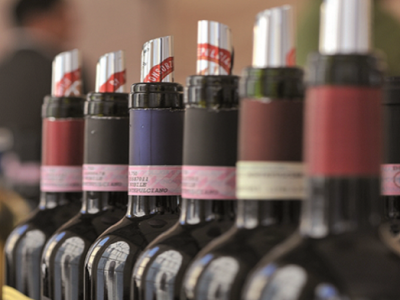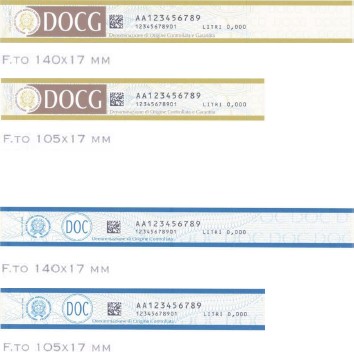The Geographycal Designations were first introduced by the Roman Empire more than 2000 year ago (read our brief History of Wine) and they are now protected by both European Union regulations and Italian laws.
The Territory and its elements, such as environment, microclimate, ecosystem, farming practices and local culture, can deeply affect the wine: two bottles of a wine made with the same recipe and the same grape variety coming from two different places can be quite different in color, odour, taste, alcolemic strength, acidity, sugar content, etc.
Not only that: due to the millenary tradition, the Territories produces quite unique recipes, techniques and even grape varieties, giving birth to wines that can be produced uniquely in that single Territory, to the point that the place name is also part of the name of the wine.
Italy has the widest number of geographical designations in Europe and, thus, in the World, with 524 of them, followed by France with 415.
European Union Regulation
In order to preserve and protect the importance to these unique wines and their Territories, wines with specific characteristics attributable to a specific region can be registered under the European Union's quality logos "Protected Designation of Origin (PDO)" and "Protected Geographical Indication (PGI)". Products have to respond to the specifications outlined in Regulation (EU) No 1308/2013.
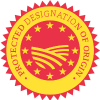
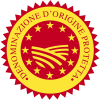 PDO - Protected Designation of Origin: it identifies a wine from a region, a specific place or, in exceptional cases, a country, whose quality and characteristics are essentially or exclusively due to particular inherent natural and human factors i.e. to its geographical environment. The grapes have to come exclusively from that geographical area where the production also takes place. The product is obtained from vine varieties belonging to Vitis vinifera.
PDO - Protected Designation of Origin: it identifies a wine from a region, a specific place or, in exceptional cases, a country, whose quality and characteristics are essentially or exclusively due to particular inherent natural and human factors i.e. to its geographical environment. The grapes have to come exclusively from that geographical area where the production also takes place. The product is obtained from vine varieties belonging to Vitis vinifera.
The logo has also the Italian translation into DOP "Denominazione di Origine Protetta", therefore, the Italian wine bottles that exhibit this brand may have in Italian or English.

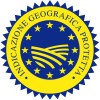 PGI - Protected Geographical Indication: it identifies a wine from a specific place or, in exceptional cases, a country, whose specific quality, reputation or other characteristics are attributable to that geographical origin. At least 85% of the grapes used have to come exclusively from that geographical area where production takes place. The wine has to be obtained from vine varieties belonging to Vitis vinifera or a cross between the Vitis vinifera species and other species of the genus Vitis.
PGI - Protected Geographical Indication: it identifies a wine from a specific place or, in exceptional cases, a country, whose specific quality, reputation or other characteristics are attributable to that geographical origin. At least 85% of the grapes used have to come exclusively from that geographical area where production takes place. The wine has to be obtained from vine varieties belonging to Vitis vinifera or a cross between the Vitis vinifera species and other species of the genus Vitis.
The logo has also the Italian transaltion into IGP "Indicazione Geografica Protetta", therefore, the Italian wine bottles that exhibit this brand may have in Italian or English.
EU Register
- All the Designations and Indications of wine protected by the European Union are listed in the database E-BACCHUS
- According the the EU Regulation, the spirits can be protected only with the PGI logo and the protected indications are listed in the database E-SPIRIT-DRINKS
► The Designation of Origin and the Geographical Indication refer to all the wines of a specific AREA. A number of different wines can be produced under the same geographical designation.
Italian National Regulation
The Italian National Authority in charge to regulate and recognize the Geographic Designations is the Ministry of Agricultural, Food and Forestry Policies.
The Italian Law protects the Geographic Designations since 1967, now the Italian regulation incorporates and expands the European regulation, introducing more stringent dispositions.
The Protected Designation of Origin is split into two categories:
- DOCG - Denominazione di Origine Controllata e Garantita (meaning Controlled and Guarenteed Denomination of Origin), that applies to 74 designations (List of DOCG designations);
- DOC - Deominazione di Origine Controllata (meaning Controlled Denomination of Origin), that applies to 332 designations (List of DOC designations).
The EU designation of Protected Geographical Indication corresponds with the italian designation IGT - Indicazione Geografica Tipica (meaning Typical Geographical Indication), that applies to 118 disignations (List of IGT designations).
All the protected designations shall comply to a specific disciplinary, which standard structure includes the following sections:
- Article 1, Denomination: the name of the Denomination
- Article 2, Ampelographic base: identification and classification of grapevines belonging to the Denomonation
- Article 3, Grape production area: description of the geographic area under the Denomination
- Article 4, Prescriptions for viticulture: all the rules about the cultivation of the vines
- Article 5, Prescriptions for for vinification: all the rules about the production of wines
- Article 6, Features of the wines: all the prescription about color, odour, taste, alcoholemic stregth, sugar content and acidity for each wine
- Article 7, Designation and presentation of bottles and labels: all the prescription about the type of allowed bottles and indications in the label
- Article 8, Connection with the geographic environment: description of the elements, including history evidences and environment and human interactions, that bind the Territory to its wines.
- Article 9, References to the controlling organization: name and address of the Organization in charge to control the compliance to the disciplinary of the wine makers and of the vine growers.
The main difference between IGT, DOC and DOCG is that the prescriptions are progressively stricter in term of indentification of the geographic area, rules for vine growing and for techniques of production of the wine.
Moreover, according to the Italian laws, the disciplinary of DOC and DOCG wines allow to use 4 additional mentions that further tighten the prescriptions:
- Classico (meaning Classic) indicates the wine (and the grapes) produced in the most antique zone of the origin area.
- Riserva (meaning Reserve) indicates wines which are subject to an aging period of at least two years for red ones and one year for white ones, but such period may also be longer, in accordance with the rules laid down in the disciplinary.
- Superiore (meaning Superior) indicates wines produced following more stringent rules and having a higher alcohol content than the basic typology of the same wine that does not include the mention "superiore".
- Vigna (meaning vineyard), followed by a toponym or a traditional name, indicates the wines made in and with grapes coming from the area under vines that corresponds to the toponym or the traditional name.
Usually, DOCG wines are the most expensive, nonetheless IGT wines are still of great qualities. Sometimes, wine makers produce very high quality, complex and very expensive wines with IGT designation, because their goal is to produce a specific unique wine that may be not entirely connected to the Territory.
As anti-counterfeiting measure, the bottles of DOC and DOCG wines are protected with a State Label, as a seal along two sides of the neck including the cork, or as a collar around the neck.
